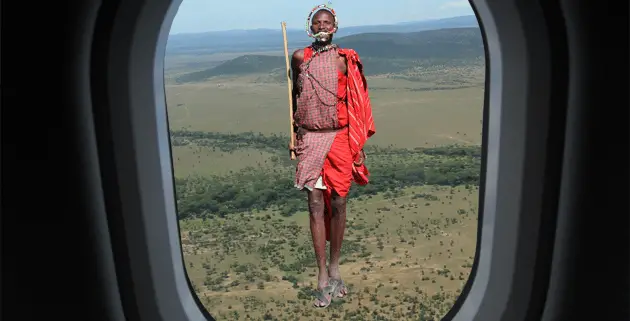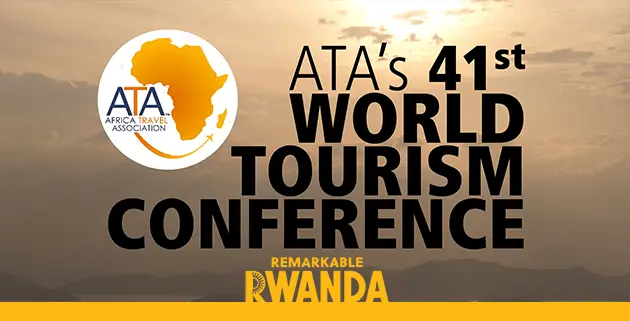Cover Story – August 2014
The August issue of Tourism Tattler represents the 50th edition that I’ve published since taking over the media title back in 2007 (in fact, the founding of Tourism Tattler as a B2B travel trade media title by SATSA goes back to the mid-1970s). Back in 2007, we distributed just over 3000 copies of the magazine locally but today, with the advent of digital publishing and print-on-demand technology, the magazine is distributed internationally, through multiple channels and reader interface options, and is growing daily. Tourism Tattler will always be available free of charge for your ‘edification’ – a word that succinctly describes what I’ve been on a mission for the past 8 years to create. Namely, a travel trade platform through which to provide informative, and hopefully, educational content to tourism professionals who specialise in providing travel services in, and to, the content of Africa.
Our front cover for this edition features an iconic rhino viewing safari scene from the image bank of South African Tourism.
The August cover is an appropriate image considering the rhino poaching issue debated at the SATSA 2014 Conference, from 08 to 09 August at the Spier Wine Estate in Stellenbosch, during a session titled ‘Preserving our rhino – pro-trade versus anti-trade’.
Read more articles about conservation and the environment.
South Africa is home to more than 80% of the world’s rhino population, which are rapidly being decimated. Between the years 2000 to 2007, an average of 17 rhino was poached per annum (120 deaths over 7 years). Since 2008 however, the annual average has burgeoned to 495 (3,216 deaths over 6.5 years).
Solving the rhino poaching scourge is by no means an easy task. There are proponents for legalising the trade in rhino horn (mostly by those who have stockpiles of horn accumulated through natural deaths of rhino), while others favour dehorning, dying or even poisoning the horn to curb the trade (read our article on these options on pages 20 – 21 of the May 2013 edition or at www.tourismtattler.com/to-breed-to-dehorn-or-to-poison).
The South African government, claims that its position regarding the trade in rhino horn is being distorted by the anti-trade lobby and the media, while the Department of Environmental Affairs states that no final proposal has been compiled regarding the legal trade in rhino horn as an additional intervention to reduce the levels of poaching. Ironically, the same statement is contradicted with a line that reads; “South Africa believes that legalising the trade in rhino horn will in no way contribute to increased poaching.” (Read more on page 23).
Some conservationists believe that reducing demand for rhino horn consumption by making it unfashionable in the end-user markets is the way to go, but others argue that the cost of mass marketing would be inhibitive and take so long to change mindsets that Africa’s rhino population would be depleted before this objective could be achieved. (read the OSCAP Conference summary on pages 28 to 29).
The rhino horn trade debate in this edition is concluded with an opinion piece by the late Brian Sandberg, titled ‘A Litmus Test for Environmental Governance’. (Read more on pages 30 to 31).
Tourism Tattler will feature the outcome from the SATSA Conference rhino deliberations in the September edition.
On to some good news; I’m proud to announce that the Southern African Vehicle Rental and Leasing Association (SAVRALA) have adopted the Tourism Tattler as the associations’ official travel trade journal. SAVRALA’s rental and leasing members represent approximately 600 000 vehicles. (See page 04 for SAVRALA’s contact details).
“SAVRALA members are an integral part of the tourism transportation sector, and clearly any issues that adversely affect the transport sector will impact on the entire tourism industry. We see our collaboration with Tourism Tattler as a platform through which to speak with one voice as collective trade associations, aimed at enhancing travel sector communications and regional cooperation in cross-border transport issues,” says Sandile Ntseoane, General Manager at SAVRALA.
Since the founding of Tourism Tattler as a media title by SATSA in the 70s, the editorial objective has remained consistent; namely to provide the travel trade with informative and educational content aimed at assisting tourism product owners, entrepreneurs and their staff in providing quality tourism services. I look forward to welcoming other travel and tourism associations onboard in the near future.
In the Attractions section of this edition, we feature Cape Town’s V&A Waterfront (page 08), and profile the artists of Seychelles (pages 10 to 14). Our regular features in the Business section include the SATSA MIR on the latest inbound travel and hotel occupancy statistics (page 16), South Africa’s tourism business performance for the second quarter of 2014 (page 18), access to finance for SMME development (page 22) and an explanation of what the annual tax season really means for businesses in South Africa (page 24).
The Conservation section focuses on the rhino horn trade (pages 27 to 31), while the Hospitality section features a property review on Legend Lodge’s Entabeni Conservancy in Limpopo, South Africa. In the Legal section, Louis the Lawyer starts a new series on Risk in Tourism and the theme continues on pages 38 to 39 with Part 2 on Managing Risk. And finally, the Photography section explains how to use the camera histogram feature (page 37).
Enjoy your read.
Yours in Tourism, Des Langkilde. [email protected]




